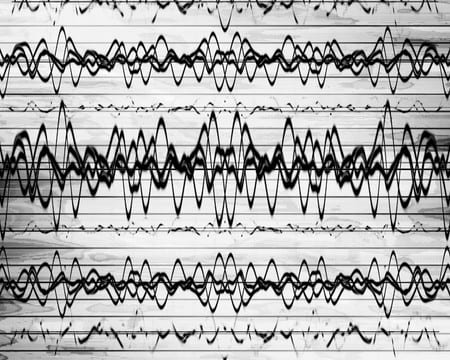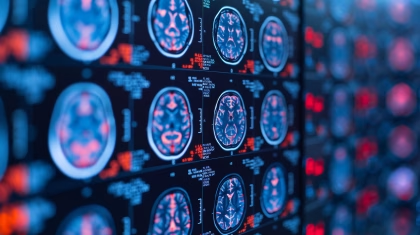The article provides a comprehensive overview of the anatomical structure of an EEG cap, detailing its key components and functionalities. It explores the importance of electrode placement and the role of each sensor in capturing brain activity. Understanding the intricate design of an EEG cap is crucial for accurate neuroscientific research and medical applications.
Table of Contents
- Electrodes: The Key to Measuring Brain Activity in EEG Research
- X Best EEG Cap Options In The Market
- How Many Electrodes Should Your EEG Cap Have?
- Electrode Placement in Neurofeedback Cap
- Choosing the Right EEG Cap Amplifier
- Choosing Between Wet or Dry Electrodes for Your EEG Cap
- Wired vs Wireless EEG Cap
- iMotions integration with EEG
- Free 59-page EEG Guide
At first glance, electroencephalography – or EEG as it is more commonly known – can be a little bit intimidating.
The technology used can conjure up imagery of science-fiction thrillers and seems complicated and inaccessible to the unacquainted.
This is before you have to get to grips with the theory behind EEG and how it actually works! Once broken down however, you’d be surprised how straightforward EEG and the associated technology is to use.
EEG equipment has become increasingly user-friendly in recent years and its powers can be harnessed to great effect. You will be amazed by the insights EEG can provide in terms of cognitive states and emotional processes.
In this article, we will explore some of the technology currently available, and discuss what’s important when selecting a product.
Electrodes: The Key to Measuring Brain Activity in EEG Research
The human brain is constantly fizzling with activity! Even while we are asleep, our brain cells communicate by passing electrical impulses back and forth. The purpose of EEG is to measure the electrical activity resulting from the interactions between neurons.

Electrodes are the key to measuring these electrical charges. Electrodes are flat, metal discs which are attached to the scalp. EEG caps have multiple electrodes due to the fact that different areas of the skull produce different signals.
X Best EEG Cap Options In The Market
The best EEG caps available on the market offer advanced neuroimaging solutions for capturing and analyzing brain activity. These cutting-edge caps provide exceptional comfort, precise electrode placement, and compatibility with state-of-the-art EEG systems, making them essential tools for neuroscience research and clinical applications. Below we highlight a few options for EEG caps natively compatible with iMotions:
Neuroelectrics – Enobio 8/20/32
Neuroelectrics’ Enobio series EEG headsets are renowned for their exceptional versatility, as they are designed to accommodate various research and clinical needs. One of their key strengths lies in their non-invasive and user-friendly design, ensuring maximum comfort for participants during prolonged EEG data collection sessions. Additionally, these headsets offer high-density electrode configurations and integrated software solutions, empowering researchers and clinicians to obtain rich and precise brain activity data while streamlining the analysis process.
Advanced Brain Monitoring – B-Alert X10/24
Advanced Brain Monitoring’s B-Alert series EEG headsets are renowned for their exceptional versatility and accuracy. These headsets excel in providing high-quality EEG data with minimal setup time, making them ideal for both research and clinical settings. Additionally, their user-friendly software and customizable configurations empower researchers and clinicians to tailor EEG monitoring to their specific needs, enhancing the efficiency and effectiveness of their neuroimaging studies and patient care.
Brain Products – actiCHamp Plus
Brain Products’ actiCHamp Plus EEG headset stands out for its exceptional versatility and reliability. Its modular design allows for easy customization and expansion, accommodating various research needs. With high-quality signal acquisition and advanced synchronization capabilities, this headset empowers researchers to conduct precise and comprehensive EEG studies across a wide range of applications, from cognitive neuroscience to clinical investigations.
How Many Electrodes Should Your EEG Cap Have?
The minimum setup should have 8 electrodes, allowing us to measure a specific part of the brain. Most often, 8 electrode setups are used to measure frontal asymmetry for brain-based approach and avoidance motivation response (what is approach/avoidance behavior? EEG headsets with 10-20 electrodes should be adequate for most academic or commercial needs. EEG caps are also available with 20+ electrodes for more advanced imaging studies.
The ABM B-Alert X-Series is available with 4, 10 or 24 channels. These include an additional ECG (heart activity), EMG (muscle activity) or EOG (eye movement) channel.
The number of electrodes an EEG cap has will strongly influence the price. A system like the ABM B-Alert X10 will be about $10-15,000. Similarly, Enobio EEG systems by Neuroelectrics offer three options with 8, 20, or 32 electrodes. Enobio systems can be used via Wifi or USB cable connection. The pricing for these systems are within the range of €5,000 to €20,000.
Electrode Placement in Neurofeedback Cap
In terms of the area of application, it is vital that the cap allows electrodes to be positioned precisely. All top specification EEG caps will have electrodes which are placed according to international standards.
Make sure to choose an EEG cap that is easy to fit and can be sized accurately. EEG headsets should come with a variety of sizing options and be easily adjusted.
Most EEG participants will also tell you they don’t want to spend too long waiting around! It’s important to take into account how long your EEG headset takes to set-up and how comfortable it is for the user.
A too tight cap would influence the participant’s state drastically, therefore confounding your experiment’s results. A too loose cap on the other hand would lead the electrodes to be unstable, therefore could lead to data loss. It is crucial to try out the different cap sizes on a few participants in a pilot, especially for the extremes in your sample. For example, you can try the caps on the oldest versus the youngest people that will be in your sample, and ask them how comfortable it feels.
Choosing the Right EEG Cap Amplifier
Signal quality is of vital importance when it comes to EEG. The initial EEG signal is comprised of low frequency fluctuations which need to be amplified. As a result, the amplifier is often the most expensive and defining feature of an EEG headset. If there is one thing to check, make sure it’s that the amplifier is of the highest quality.
Look out for features like bandwidth and sampling rate. Some headsets now have the amplifier built in to the electrode.
Choosing Between Wet or Dry Electrodes for Your EEG Cap
This is another common question when it comes to EEG products. In terms of the difference between the two, “Wet electrodes” use a conductive gel to improve signal quality while “Dry Electrodes” do not require such gel.
The gel used can be sticky and unpleasant for participants. For this reason many of those wishing to use EEG for market research purposes opt for dry electrodes in order to improve participation and compliance. This is understandable; the last thing you want is the participant having a negative experience! Make sure to incentivize your participants adequately for the trouble they go through with the sticky gel in their hair!
Although many modern dry electrodes provide excellent signal quality, wet electrodes provide better contact between electrode and scalp, improving data quality.
An excellent compromise comes in the form of headsets that use cleaner and more comfortable saline based wet sensors. These provide both comfort and quality. Newer, cleaner electrode creams are also available.
Wired vs Wireless EEG Cap
This is another big question and one which will depend on your research purpose.
In order for EEG technology to become more user-friendly, many EEG systems have moved from the bulky systems used in clinical settings to sleek, convenient wireless systems. This is allowing them to be used in a range of new settings. If your research question requires simulation of a real-world scenario, or you wish to use EEG with virtual reality software, then a wireless system is the way to go.
Wireless EEG has however experienced some issues when it comes to “electrical noise”. This is due to many factors including interference from other hardware, movement from participants and inappropriate experimental conditions.
For a more in-depth look at how wireless transmission works, have a look at this link.
So how should this influence what EEG headset you buy? A recent study found that when good transmission quality is used for wireless data, there is little to no effect on signal quality.
Important factors that may influence this quality include the sampling rate and transmission mode. It is important to ensure these are up to top specification.
If your study involves movement of some form it’s also important to check what the data transmission range is. Your EEG headset should be able to facilitate whatever distance is required. Some wireless headsets provide a transmission range of 10 meters.
iMotions integration with EEG
We have discussed the basic technology associated with the EEG cap but there are also ways to integrate EEG with new and exciting software.
iMotions’ EEG software takes EEG measurement up a notch. It allows researchers to combine EEG data with a range of other biosensors including eye tracking, ECG, respiration and surveys. This is an important feature as it opens the door to a range of novel research questions.

For example, when combined with eye tracking we have the means to understand where the person is looking when demonstrating a particular brain response. This gives us an incredible insight into their reaction to the stimulus provided – something which could not be achieved with EEG alone.
Although the results are sophisticated the technology couldn’t be easier to use. iMotions “plug-and-play” reduces set-up time substantially and allows to combine the software with wireless EEG headsets seamlessly.
Now that you have a basic grasp of how an EEG cap works you may want to take a look and find out more about EEG products. Take a look at our EEG Pocket Guide which will give you a more detailed insight into the world of EEG.
Make sure to open your mind to the research potential of EEG, and the range of exciting new technology available!
Free 59-page EEG Guide
For Beginners and Intermediates
- Get a thorough understanding of the essentials
- Valuable EEG research insight
- Learn how to take your research to the next level

Psychology Research with iMotions
The world’s leading human behavior software











